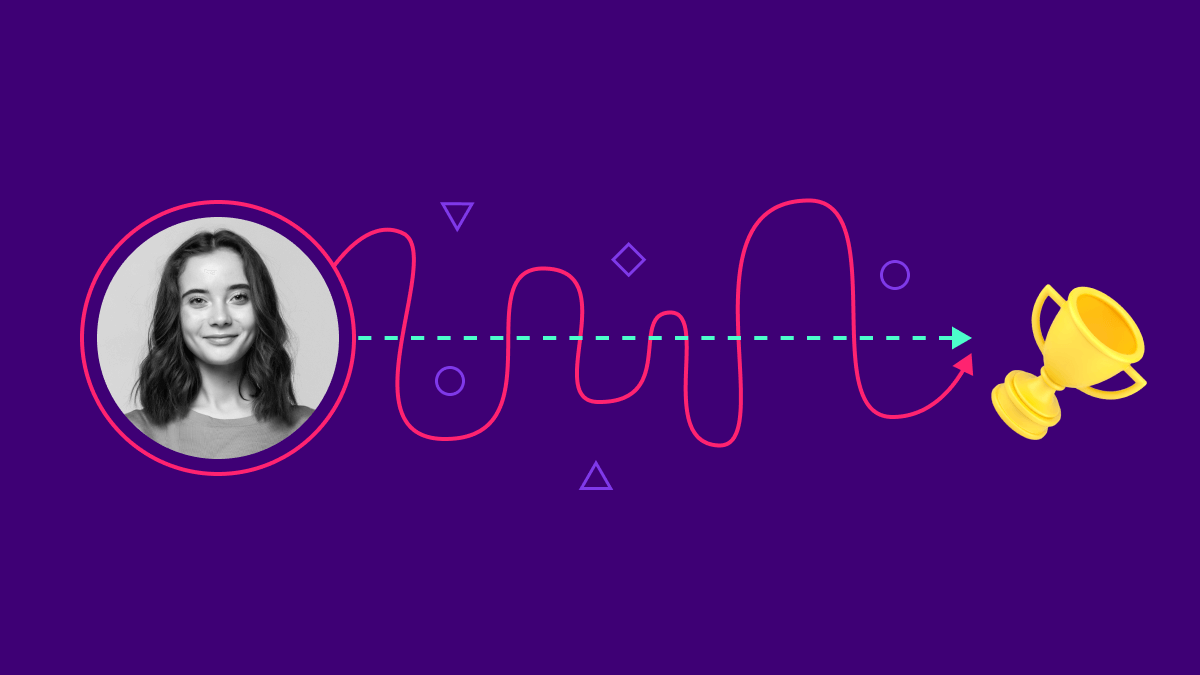The top 12 sales methodologies and how to choose the right one
The best sales methodology for your situation will change; it’s not static.
Your company needs different sales methodologies at different stages of its maturity.
The sales process that works in one stage of your company’s growth may actually harm it at a different stage.
You often have to reverse your prior sales methodologies, even if they were once successful.
For too long, outspoken sales professionals have “known” that such-and-such sales methodologies are either always successful or never work.
They develop these opinions when they witness the success or failure of a particular sales methodology firsthand at a company, and they bring that experience to bear in every subsequent job.
But that tunnel vision prevents them from understanding the most important thing about how to choose the right sales methodologies:
- The skill that matters isn’t mastering a particular sales methodology. It’s knowing which sales process to apply to which situation (and how to successfully deploy it across your organization).
In other words:
- Most well-known sales methodologies work incredibly well in some situations, and actively cause failure in others.
I’m going to show you the top sales methodologies out there today, tell you how to choose the right one, and explain how to successfully roll it out across your sales organization.
What is a sales methodology?
A sales methodology is a framework — a set of rules and principles, actionable steps — that help guide salespeople towards how best to approach prospects. These “how-to” templates keep all sales reps on brand, on message, and speaking the same language to ideally help increase win rates and close more deals.
MEDDIC vs Challenger vs other top sales methodologies
First, let’s start with a list of the top 11 sales methodologies, and how to sort out which one is right for you.
1. The Challenger Sale Methodology
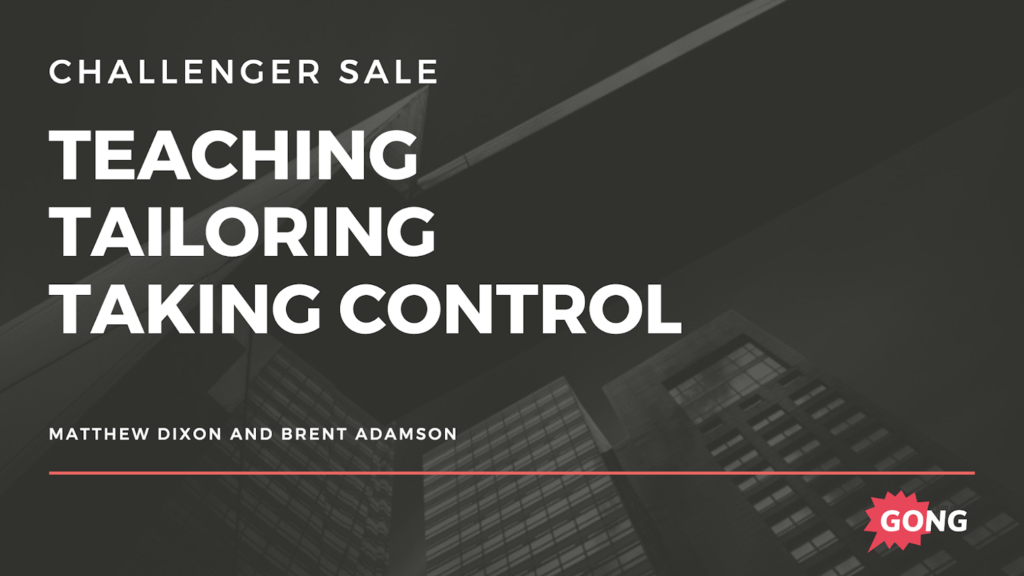
The Challenger Sale methodology emphasizes “commercial teaching”. That means educating your buyer about a problem they either undervalue or don’t know they have. Your product should, of course, solve that problem.
This TaylorMade video is a great example of that approach:
Notice how the video teaches you how to achieve greater distance in your golf swing in a way that connects with the product’s unique strength.
In other words, they don’t lead with their product, they lead with insight, and that changes how their buyers think about the problem their product solves.
But how do you achieve a full commercial teaching pitch in six phases? Here’s how:
The Warmer: Describe the problem to your buyer in a way that gets them to nod in agreement.
The Reframe: Deliver insight about the problem that the buyer hadn’t previously considered, so they think about the problem in a new way.
Rational Drowning: Tally the costs associated with the problem in a way that gets the buyer to squirm.
Emotional Impact: Tell a story about how the problem typically impacts other companies like theirs in a way that’s immediately familiar and painful.
A New Way: Introduce the behavioral changes your buyer would have to adopt to make good on solving the problem.
Your Solution: Introduce your solution and explain how it helps buyers adopt those behaviors better than any other approach.
How to Know If It’s Right For You
In new product categories, buyers often don’t recognize the problem you solve. They think that what you’re describing is “just how life works” or the cost of doing business. Commercial teaching works well in this environment because your buyer needs to be educated.
This sales methodology also works well in highly competitive markets. Commercial teaching pitches lead to your strengths, not with them. If you have an offer your competitors can’t match or a differentiator your buyers currently undervalue, the Challenger Sale may be the answer. Your pitch should teach your buyer to value your differentiators.
The Challenger Sale methodology doesn’t work well when you have young or entry-level salespeople. This methodology requires a tremendous amount of business acumen and domain knowledge. Most inexperienced sellers will not be able to do it with credibility.
This methodology is also tricky to pull off if your buyers are insecure about their perceived power within their organization. Those types of people do not like to be “challenged.” It can be done, but your sellers must be equipped with loads of tact and finesse.
Finally, to make this work, your sales organization needs an incredible amount of domain knowledge. Marketing has to help prep your team by playing an active role in training your sellers on the market, buyer personas, pain points, and insights. If you don’t have a strong marketing capability, your message will likely be inconsistent and confusing.
2. Solution Selling Methodology
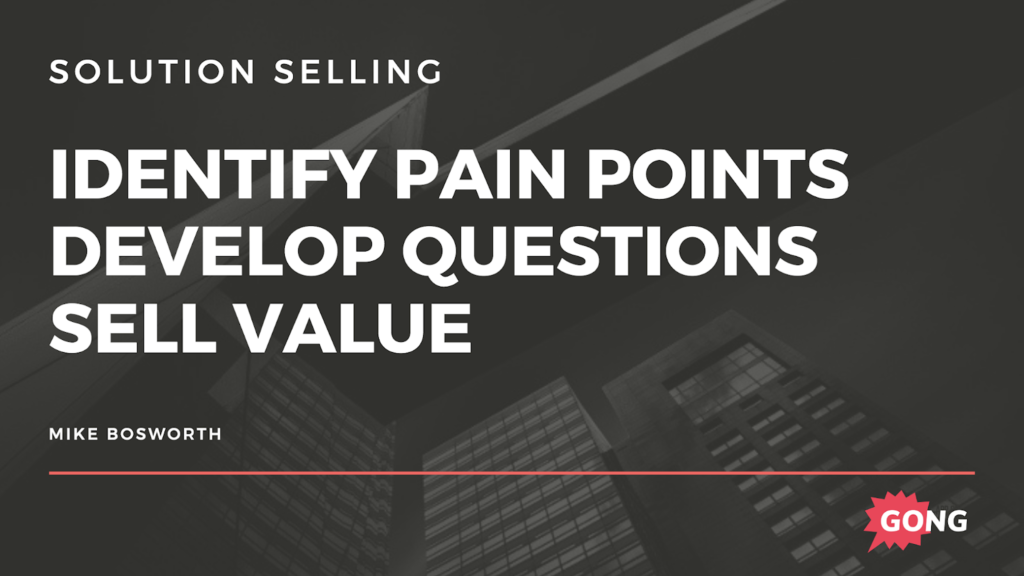
Solution Selling is based on a sophisticated approach to discovery and question asking called “the 9-box vision process model,” which looks like this:

The sequence can be broken down into three phases:
- Diagnose reasons: Start by identifying the critical business issue using open-ended questions (box 1). Once you’ve given the buyer freedom to express their pain without leading them down a particular path, you’ve earned the right to ask more pointed questions (box 2). Do that in a way that leads the buyer to diagnose the problem in a way that favors your solution. Finally, (box 3) you’ll summarize what you’ve heard before moving onto the next step.
- Explore Impact: Next, you’ll explore how the business issue impacts the organization, in an attempt to intensify the pain and build urgency. Again, you’ll start with an open exploration of who the business issue impacts, and how (box 4). You’ll then repeat the pattern of giving your buyer more specific guidance on how the problem affects their organization with targeted questions (box 5) and a summary of what you heard (box 6).
- Visualize Capabilities: During the last phase in the questioning sequence, your goal is to help your buyer build a vision of what a solution looks like. Obviously, you want to favor your product. Stay true to the pattern of starting with open-ended questions (box7), then toss ideas at them in the form of questions (box 8) to help them visualize your capabilities as part of the solution (box 9).
[P.S. Check out our free Discovery Call Cheat Sheet by clicking the banner below]:
How to Know If It’s Right For You
As you can see, Solution Selling is a complex skill, and it’s also incredibly question-heavy. Many buyers don’t have the patience to answer that many questions. Usually, the ones who do are involved in solving complex problems with complex solutions. So Solution Selling is best suited to complex deals in which sections of your sales process are purely dedicated to discovery calls.
Solution Selling is a poor fit for transactional sales environments with a standardized, simple solution. The questioning sequence is typically overkill in these situations. If you have a sales organization that sells exclusively over the phone, Solution Selling is likely a poor fit. While Solution Selling doesn’t have to be face-to-face, if you sell via the web or video conference, it’s more likely to work for you.
3. What Is The SPIN Selling Methodology?
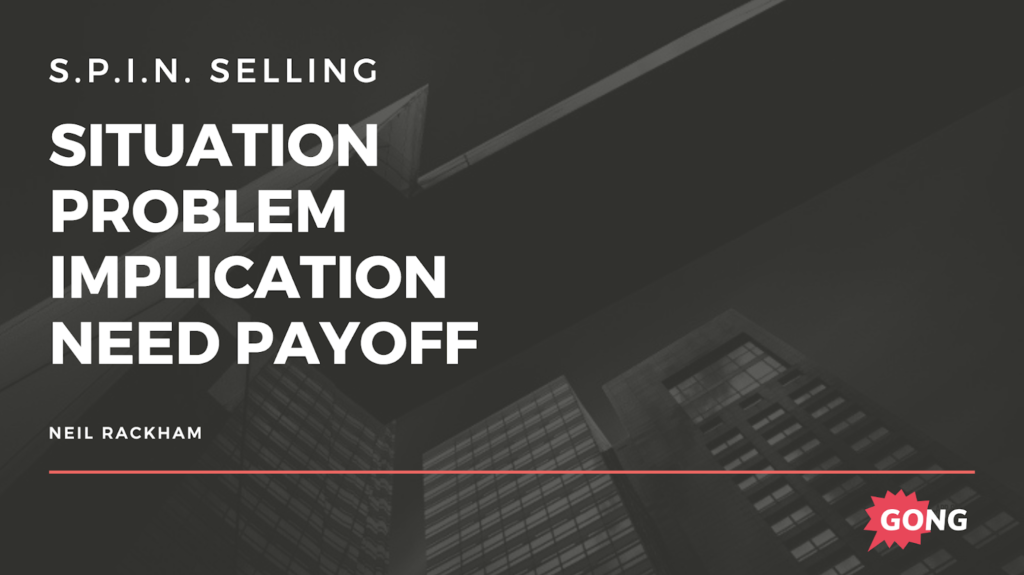
The SPIN Selling methodology is similar to Solution Selling in that it relies on great sales discovery and question asking to help customers understand their problems, how impactful they are, and what the best solution might look like.
The concept was introduced by Neil Rackham in 1988, and based on 12 years of research and over 35,000 sales calls.
Rackham and his team found that the top salespeople rarely pitch their products or services.
Instead, they introduced strategic, high-value questions purposefully designed to gain key information and guide the conversation.
Here’s a breakdown of the SPIN sales methodology:
Situation: Situational questions are information-gathering questions about your buyer’s context. They are standard sales questions used to qualify the buyer, but those that can’t be answered via research.
Problem: Problem questions are the raw material for SPIN selling. They are questions that get your buyer talking about their problems and needs. These questions set the stage for two other types of questions: implication and need-payoff.
Implication: Implication questions are about the consequences of the problems your buyer voices. They help your buyer realize the seriousness of the problem, and build pain and urgency. When used skillfully they separate great salespeople from average salespeople.
Need-Payoff: Need-payoff questions uncover the benefits of solving a problem. They get the buyer to verbalize — and sell themselves — on solving the problem. Once you’ve used your Problem and Implication Questions, these propel the deal even further.
Here’s a simple (and mega-helpful) flowchart from our friends at Lucid Software to help you understand how the SPIN Selling sales methodology works:
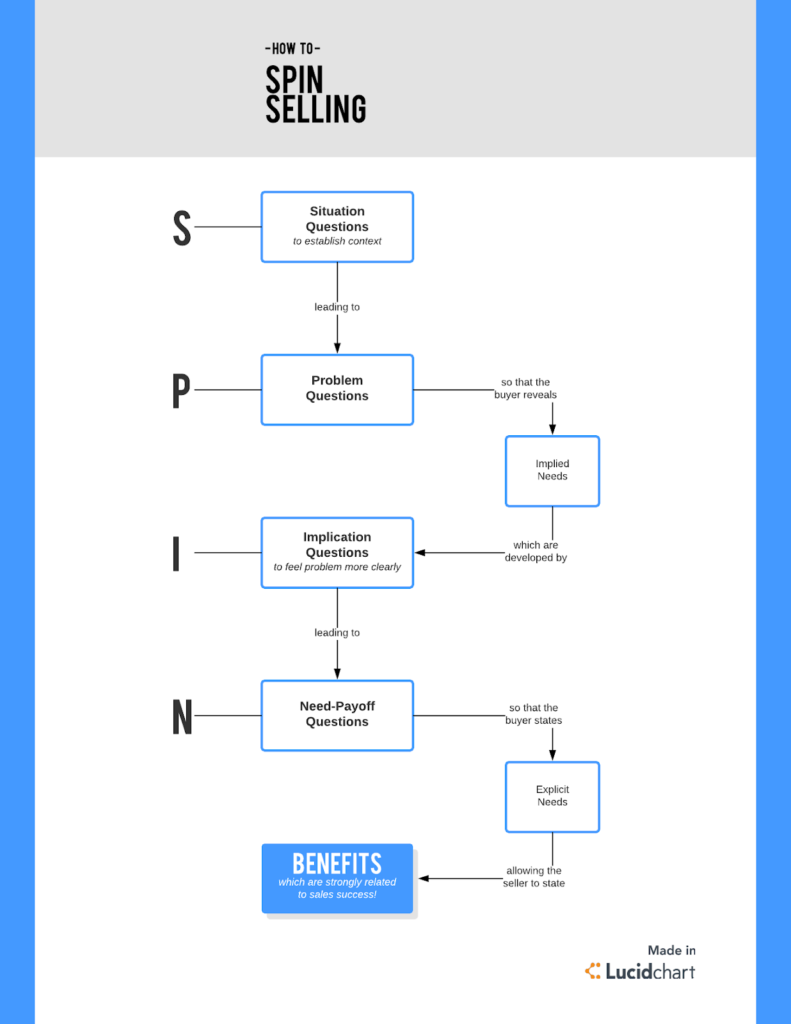
How to Know If It’s Right For You
The same logic applies here as in Solution Selling, so go back and have a look at that section if you skipped it.
4. MEDDIC Sales Methodology
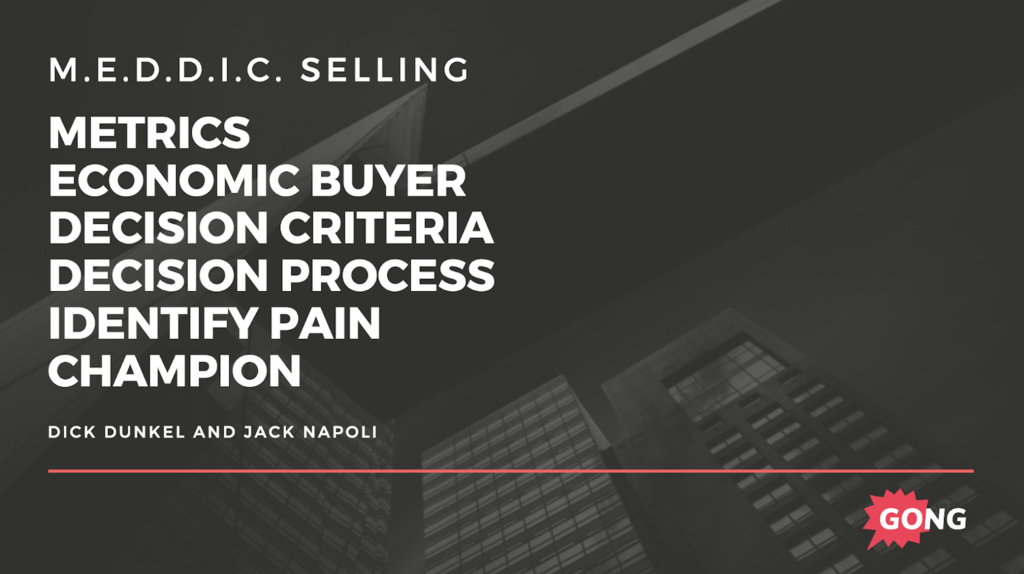
MEDDIC is a sales methodology built for complex, enterprise-level B2B deals. It was created by Dick Dunkel and Jack Napoli when they were at the PTC corporation in the mid-1990s.
The MEDDIC sales methodology takes sales reps through a six-part discovery process with each of their accounts:
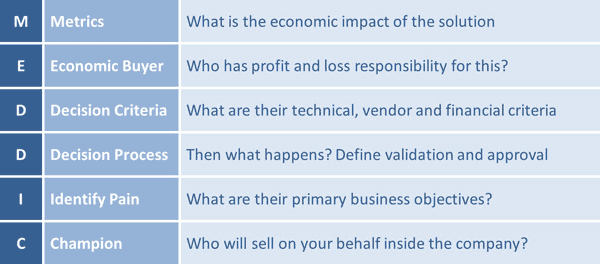
As you can tell from those questions, the MEDDIC sales methodology is focused on the decision-making processes happening inside your buyer’s organization. It’s meant to help you get clarity when you’re dealing with deeply complex organizations, so you can tailor and target your sales strategy.
How to Know If It’s Right For You
The MEDDIC sales methodology works best if you sell to organizations with multiple (5+) buyers with complex internal politics and an overall complex buying ecosystem and process. It helps you navigate who plays which role on the buying panel, and which steps to take with each buyer to maximize your odds of closing the deal.
This process is complete overkill for deals that involve three or fewer buyers in the decision-making process. If your sales reps sell to small businesses with few decision makers, count MEDDIC out. Its value grows with the complexity of your deal.
5. Sandler Sales Methodology
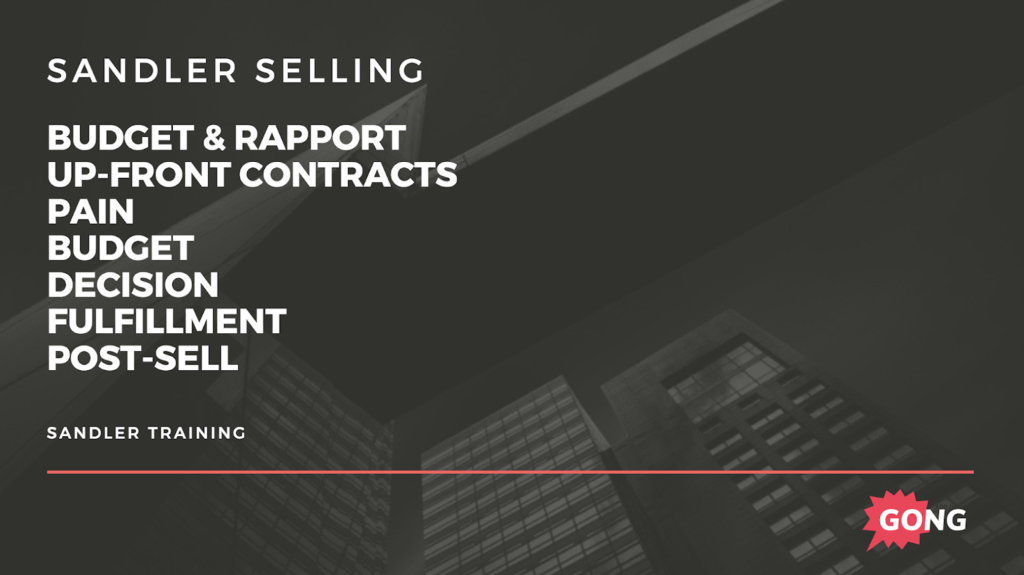
The Sandler Selling System is one of the most used and celebrated sales methodologies on this list. First developed by David Sandler in 1967, the Sandler Selling System opts to reframe the entire sales process so that the buyer is convinced they are the one pursuing the deal, not the other way around.
The Sandler Selling System’s goals are twofold:
- Convince the buyer they have a problem that can only be solved by your solution.
- Convince the buyer that this is a top priority that will solve organization-wide and individual needs.
The stages of Sandler Selling Methodology include:
Bonding and Rapport: Engage your buyer with a sincere desire to help. Conduct discovery and qualify them.
Up-Front Contracts: Agree on a plan with the buyer to ensure you secure the next step in the sales cycle.
Pain: Assess the buyer’s needs and determine how your solution can help.
Budget: Assess the buyer’s economic situation (and whether they have the budget you need).
Decision: Make a decision to qualify or disqualify the prospect, or choose to speak with more people before making that decision.
Fulfillment: Present an offer that fulfills the buyer’s needs.
Post-Sell: Continue to maintain rapport, counter the competition, and add value.
The Sandler methodology places significant emphasis on maintaining control of the sales process by using upfront contracts with your buyer.
How to Know If It’s Right For You
The Sandler sales methodology is an incredibly versatile sales methodology that applies to most selling situations.
6. Inbound Sales Methodology

Over the last decade, buyers have become more informed and active than ever before. Instead of needing to talk to a sales leader to get fundamental product information, the Internet gives buyers incredible power in the buying and selling process.
The Inbound Sales methodology takes advantage of this trend, emphasizing that your sales process should align with the steps in your prospects’ buying process.
Popularized by HubSpot, the Inbound Sales methodology contains four phases:
Identify: Discover the right business opportunity from which to propel your deal.
Connect: Help your buyer understand the priority level of this business opportunity.
Explore: Ask about your buyer’s goals and challenges so you understand whether your offering is a good fit.
Advise: Help your buyer understand why your solution is uniquely positioned to solve their needs.
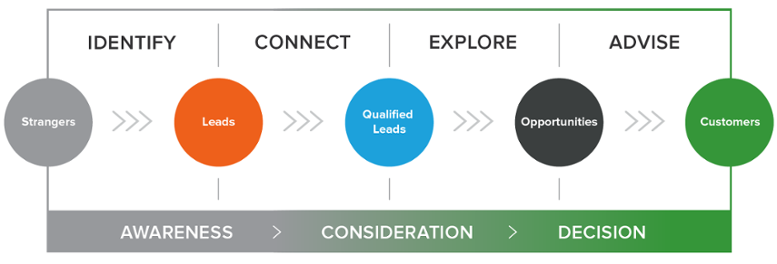
How to Know If It’s Right For You
Inbound selling is best suited to sales organizations with substantial inbound marketing resources, and buyers who are actively searching to solve their problem (such as making queries in search engines like Google).
Sales organizations (particularly new categories and startups) that don’t have the luxury of inbound buyers actively searching for solutions aren’t a great fit for this sales process.
Sales organizations that sell to C-suite buyers at large enterprises are also usually a poor fit for Inbound Selling. Most of the time, buyers of that caliber need to be “hunted.” It’s rare that the CFO of a Fortune 500 company will request a demo from your website.
[Want to learn how to sell to the c-suite like a true master? Click the banner below to learn more:
Companies that don’t have a dominant winner in their category do best with this sales methodology.
7. Conceptual Selling Methodology
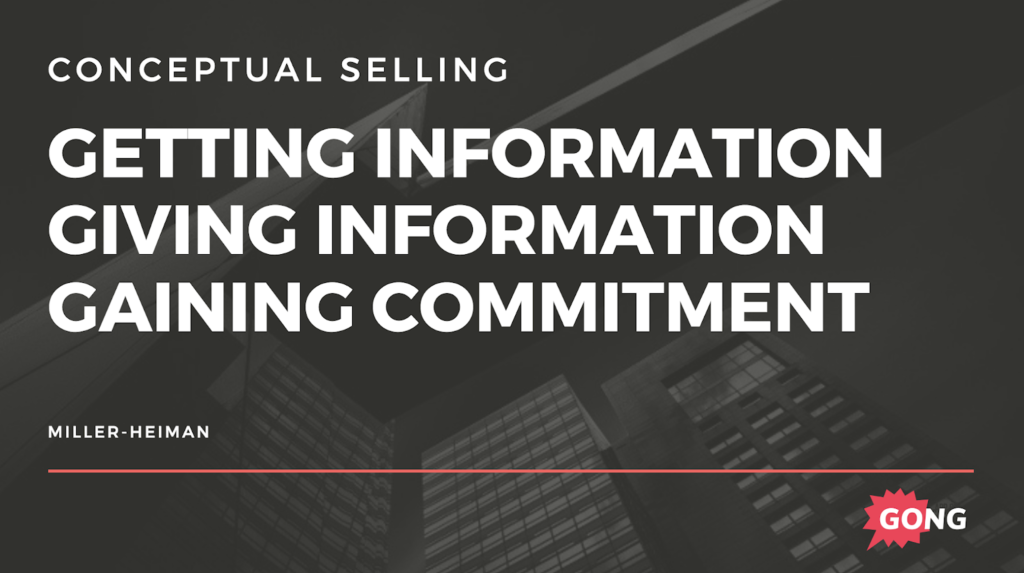
With Conceptual Selling, customers don’t buy products, they buy the concept of a solution. The methodology can be summarized as “find a need, and fill it.” Instead of leading with a pitch, you should uncover a prospect’s needs, how they perceive your product, and how they plan to make their buying decision.
Your goal is to get information that will help you align their buying process and your selling process. You’ll use five types of Conceptual Selling questions to help you move from one stage to the next:
The Five Stages of Questions in Conceptual Selling
Confirmation: These questions confirm what you’ve learned or researched.
New Information: These questions unearth the customer’s needs and what they’d like to achieve.
Attitude Questions: These questions help the seller better understand each buyer and what that buyer stands to gain from a solution.
Commitment Questions: These questions aim to understand and increase the buyer’s commitment to the project.
Basic Issue: These questions raise potential problems so you can overcome objections.
The Conceptual Sales methodology ultimately boils down to a three-part dance: get information, give information, and get commitment.
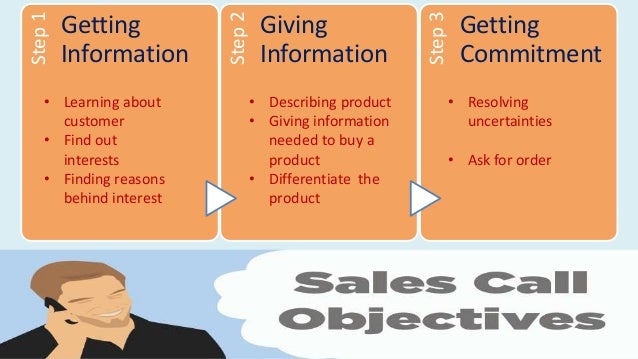
Exchanging information builds trust and helps you and your buyer engage in more consultative discussions. In turn, you can better qualify buyers and position your value during your close.
How to Know If It’s Right For You
Conceptual Selling relies on an ongoing give and take of rich and copious amounts of information between the seller and the buyer. This means two things:
1. Conceptual Selling is probably the right sales methodology for you if you need a lot of information about your buyer’s problem and context, and your buyer needs a lot of information about your solution.
2. Conceptual Selling is likely a poor fit if your deals involve exchanging small amounts of information.
8. SNAP Selling Methodology
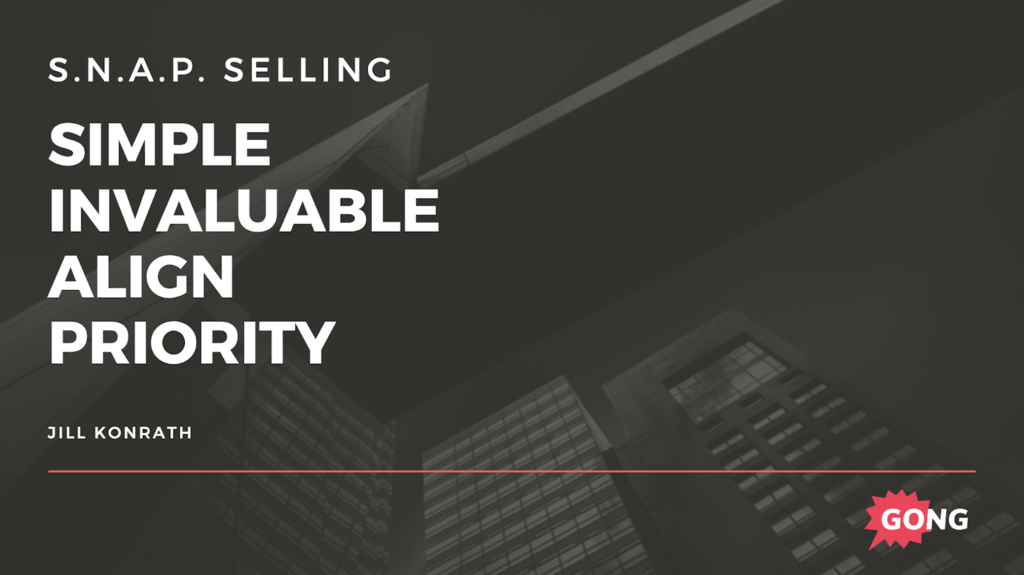
The SNAP Selling methodology is a relative newcomer. It was introduced by Jill Konrath in 2010 as a way to break into buyers’ very busy schedules. This sales process acknowledges that we’re all running at full tilt, and offers up ways to get your buyers’ attention even when they’re swamped and have 1,000 options to choose from.
Here’s how she positioned SNAP:
Simple: It’s hard to change habits, so make that process as simple as possible for your buyers. Make it easy for them to adopt your solution.
Invaluable: Be unique. Demonstrate your expertise. Stand out from the crowd. If you do all of those things, you’ll be able to showcase the value of your product.
Align: Buyers are more likely to choose your product if they see that it aligns with their needs and their core beliefs.
Priority: Focus on your buyers’ needs. What’s their top priority? How can you help them win deals?
You’ll use these elements of the SNAP Selling methodology to focus on three key decisions buyers make during the sales process:
Decision 1: Buyer Allows You Access
The buyer downloads a whitepaper, subscribes to your blog, requests a demo, takes a meeting with a sales rep, etc. Allowing you into their world is the first important decision they make.
Decision 2: Buyer Drops the Status Quo
Their second decision happens when they say ‘yes’ to making a change in their organization, thereby agreeing that the status quo is no longer acceptable.
Decision 3: Buyer Agrees to Switch Resources
Their final decision happens when they choose to invest in new resources.
How to Know If It’s Right For You
SNAP is right for companies that sell inside crowded markets and that conduct transactional B2B deals. That’s because it allows them to operate quickly, precisely, and efficiently so they stand out from their competition.
If you frequently sell against stiff competition, SNAP will help you get incredibly clear on who you are, what you offer, what your prospects needs, and how you meet that need. Download this cheat sheet to learn more techniques for selling against your competitors:
It’s also a great system if your organization is into streamlining and has aligned its sales and marketing efforts around a solid CRM and a step-by-step sales process.
9. NEAT Sales Methodology
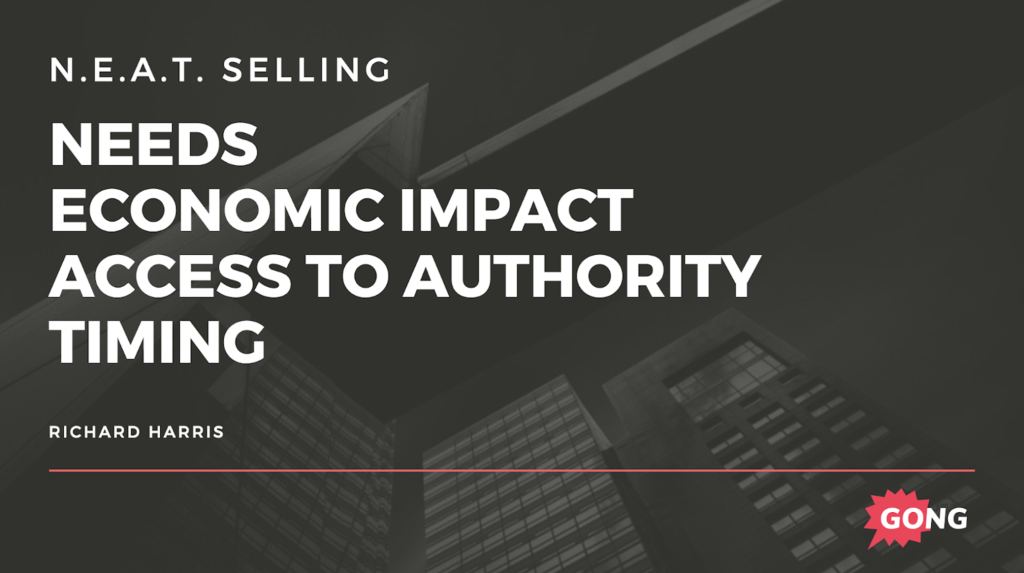
NEAT is a sleek update that blends two classic methodologies:
- AIDA (Attention, Interest, Demand, Action)
- BANT (Budget, Authority, Need, Timing)
It boils them down to their most important elements:
Needs: Which of your buyer’s core needs does your solution address?
Economic Impact: What economic impact will your solution have on your buyer?
Access to Authority: Who are the decision makers involved in the buying process?
Timeline: What event/deadline will force your buyer to make a decision?
The Harris Consulting Group introduced the NEAT sales methodology in response to emerging trends in software-as-a-service (SaaS) sales and high-stakes B2B enterprise sales, where nonlinear sales processes with multiple decision makers are the norm.
It focuses on understanding a buyer’s needs, corralling their decision makers, being clear about savings, and pushing for a decision.
How to Know If It’s Right For You
This one was designed specifically for SaaS and B2B enterprise teams with imprecise sales cycles. If you’re dealing with high-growth, high-achieving, fast-moving SaaS companies on a regular basis (we hear that!), you should consider the NEAT Selling methodology.
10. Target Account Selling Methodology
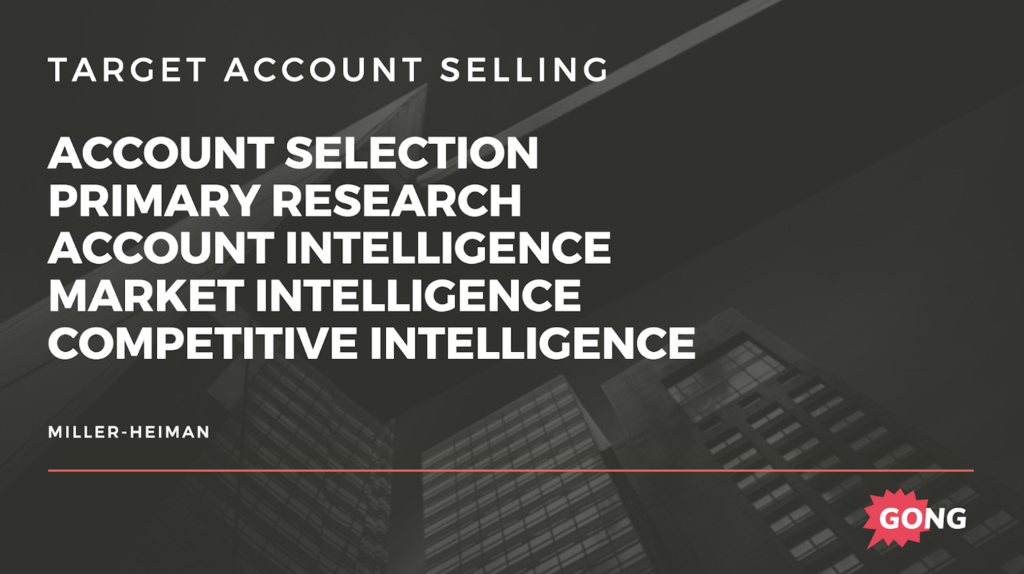
Target Account Selling (TAS) is a B2B sales methodology that identifies and strategically sells to large enterprise accounts.
Target accounts are the ones that match your ideal customer profile. Of all your potential buyers, your target accounts are the best suited to using and deriving value from your product.
If you use it correctly, the TAS methodology offers a structured, repeatable, and strategic approach to engaging accounts. That’s a large part of what makes it highly valuable in the right circumstances.
Here are its main information-gathering components:
Account Intelligence: What’s happening in this account?
Market Intelligence: What’s happening in this market?
Competitive Intelligence: What are our competitors doing?
Primary Research: What information am I missing that I can find through research?
Go-to-Market Outreach: What’s my final selling strategy based on all this research?
TAS is proactive, not reactive, because you actively gather information that helps you target the right accounts. This approach relies on methodical information gathering and preparation before you chase an account.
How to Know If It’s Right For You
If you regularly work with massive enterprise sales accounts that have long sales cycles and specific total addressable markets, sink your teeth in here. TAS will move you from A to Z in your search for the right accounts.
TAS is less useful for companies with broad markets, small-ticket items, and more transactional sales cycles. These companies would be better served by an Inbound Selling methodology.
TAS is a great methodology if you manage sales through large and complex organizations because it breaks the process into key components that are quite manageable. It also teaches sales professionals how to evaluate, prepare for, and win a deal.
11. The ValueSelling Framework®
This conversational, question-based approach is from the ValueSelling Associates. It focuses on the value buyers receive by doing business with you.
At the core of their framework is the Qualified Prospect Formula™. It’s a quick way to assess any opportunity. If any element equals zero, the entire sum equals zero and you move on:
QP = VMD x V x P x P®
Determine the value of each element by answering these questions:
Differentiated VisionMatch: Does the buyer’s world improve if they buy your product? Be sure there’s a match between your offering and their pain points.
Value: Is your product worth it? Uncover and test whether the buyer sees enough value in it to actually buy it.
Power: Does your buyer have the authority to make final buying decisions?
Plan: When will they buy? Develop a Mutual Plan in agreement with the buyer. Don’t create a plan without them, only to find out they won’t buy because there’s not enough value, or that they can’t buy because they lack the authority.
How to Know If It’s Right For You
ValueSelling works well in complex, B2B sales, where it’s sometimes hard to articulate value or differentiate yourself. Use it for direct, inside, and channel sales.
ValueSelling is simple enough that your whole sales organization can use its framework. Get everyone on board with driving value across the entire customer experience, from sales and marketing to product development and customer service.
12. CHAMP Selling System
The CHAMP Selling System is a customer-driven solution selling system for mid-market and enterprise SaaS sales and sales management. The concept was introduced by Zorian Rotenberg in 2007 and is focused on authentic, genuine customer-centric process with a motto: “Make Your Customer a Champion”.
The CHAMP System defines selling as “the process of creating value for your customers by helping them solve their problems and delivering a Return on Investment (ROI)”. Thus “CHAMP Selling = Value + Help + ROI” which is at the foundation of how SaaS companies must focus on adding value and generating an ROI for their customers.
While CHAMP is a full system, it also includes a CH.A.M.P acronym used in a discover process:
- CH – Challenges. As a customer-first selling system, the #1 priority to qualify is the prospective customer’s business challenges and understanding the situation, the challenge, and whether you can help the buyer solve it. Note, one of the reasons CHAMP was designed is because BANT started with a “B-Budget” which is not the first order of priority when qualifying buyers and this is why focusing on the prospective customer and their Challenges is in the 1 st spot.
- A – Authority. Who has the authority to make a final decision, to e-sign, to be involved in the decision, and also who can be a detractor. It’s important to know all the key people involved in the buying decision process.
- M – Money. Today it’s much less about the allocation of a budget for the SaaS subscription and more about the money required to invest and get the ROI on the money.
- P – Priority: how much of a priority is it to solve the business challenge and when does the prospective buyer wish to have the solution, next 60 days, 3 months, etc? P in CHAMP is also about the Process (the buyer’s internal Process for decision-making) and Plan (what is the Plan to move forward).
CHAMP is unique in several ways:
- CHAMP designed from the ground up to focus on the customer and even starts with CH (Challenges) which puts the focus on the customer.
- It’s not a proprietary system. It’s an “open & inclusive” selling system that takes the best in class of all the most effective and authentic strategies of many other selling methodologies above (such as Sandler and others) and takes the best of what works in modern SaaS sales today.
- CHAMP is an “all-in-one” system and not just a methodology or a qualification criteria – it comes with a repeatable and predictable Sales Process, and a Sales Management blueprint that helps apply CHAMP insights to Pipeline Management, Forecasting and other key aspects of leading a sales team that align a Sales Manager to the Sales Rep. Because the original creator of CHAMP is a former Investment Banking Analyst and a growth-equity VC (with an Applied Math background), CHAMP is meant to be a data-driven system for scaling SaaS companies fast – it comes turnkey with a set of Sales Metrics & KPIs to help analytical Sales Leaders to measure and improve execution and results throughout the entire sales funnel.
How to Know If It’s Right For You
If you are looking for a unified “open & inclusive” system that brings many of the authentic and customer-centric best practices from other sales methodologies combining it with a Sales Process and Sales Management methods, then the CHAMP Sales System is the all-in-one solution to your sales management challenges. Similarly to the Challenger Sale or MEDDIC, CHAMP is not effective for junior or entry-level sales teams and doesn’t work well for early stage seed companies.
Note that CHAMP is not for just any VP of Sales. It is designed for very data-driven and analytical Sales Leaders. It has been used to scale global sales from $10M to $100M and works best for SaaS companies that want to scale sales fast in a predictable and repeatable way.
How to deploy your new sales methodology
Every sales leader has had this experience:
You go through a painstaking process and choose a new sales methodology.
You get in front of the troops to announce it.
You put them through sales training.
Then… you wait.
You go back to your office, with no idea whether your sales organization is even executing the new sales process.
The best you can do is wait six months to see the results.
And if they’re poor, it’s beyond disappointing (plus, you’ve wasted six months!).
So once you choose a new sales methodology, how do you drive its execution?
Here are the five crucial steps for deploying any sales methodology:
Step 1: Get Buy-in from the Top to the Bottom
You don’t just want executive buy-in. You need team buy-in.
While it’s critical to have an executive-level conversation and ensure that your C-Suite is sold on the new selling process, its success is going to rise and fall with the people who have to execute it: your sales reps and frontline managers.
Step 2: Sales Methodology Training and Launch
Third-party organizations are exceptionally useful here.
Not only are they experts at training and launching new sales methodologies, but also bringing in a third party tells your organization to take this implementation seriously.
The last thing you want is your sales team to view this as a “flavor of the week” type of deal.
Step 3: Demonstrate What “Good” Looks Like
Once your sales reps understand the theory behind your new selling process, your job is to help them understand what the “strike zone” looks like in real life.
They should know what “good” looks like in every predictable selling scenario they encounter with your new sales methodology.
Give them a recording of a great commercial teaching pitch, or a well-executed Solution Selling discovery sequence.
Create a library of call recordings they can access at any time to consume and model the right selling behaviors.
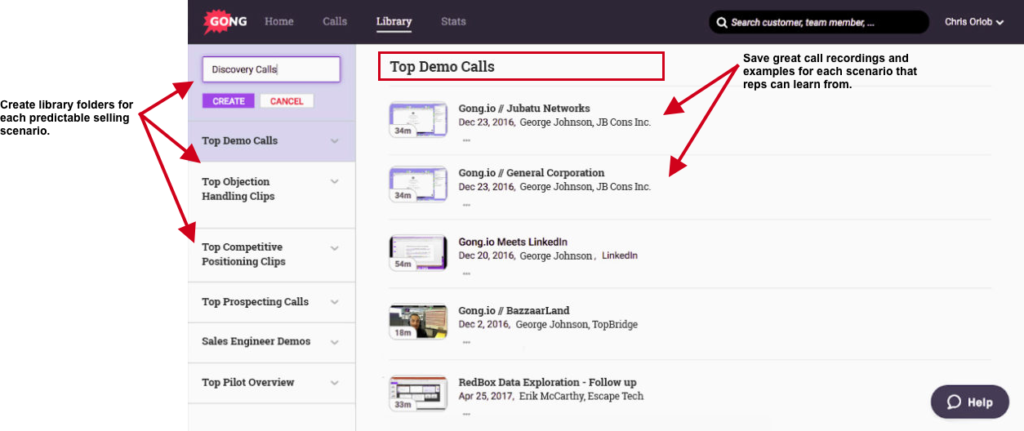
Step 4: Track the Sales Methodology’s Adoption
Your salespeople are all trained … so now what?
You need to get a sense of how well your new sales methodology is being executed during customer-facing conversations.
Every successful sales methodology uses unique language and behaviors during customer conversations.
Setup Trackers in Gong to find out whether your team is using that unique language in its sales calls. Here’s what that might look like for the SPIN Selling methodology:
![]()
Once your sales methodology-specific Trackers are configured, they’ll appear in calls recorded within Gong.io.
That looks something like this (Notice that it shows you exactly where in the call the language was used):
You can even create alerts for your Trackers.
When a call with your alert criteria happens, it’s sent to your inbox.
That helps you get an immediate sense of how well your new sales methodology is being adopted.
Step 5: Coach to the Sales Methodology
Rolling out a new sales methodology is a process, not an event.
Once you’re well into that process, your sales management’s core activity is ongoing sales coaching.
How does that work?
Well, most sales methodologies can be summed up on a scorecard.
For example, on a scale of 1 to 10:
- How well did the rep set an up-front contract?
- How would you rate the story part of the commercial teaching pitch?
- How well did the rep ask follow-up Impact Questions?
Once you implement your sales methodology, you can build a custom scorecard of questions that match it in Gong:
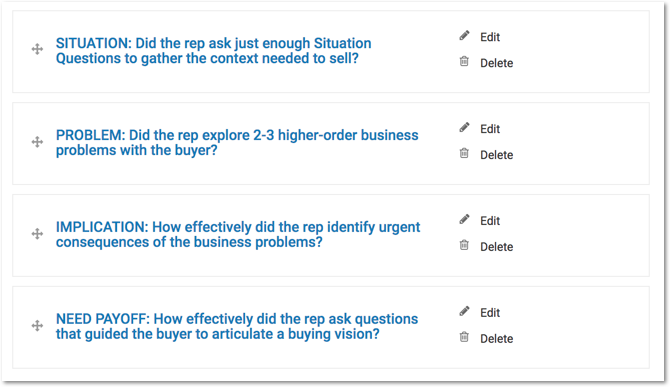
Those questions will appear when you click the ‘scorecard’ button on a call recorded using Gong:
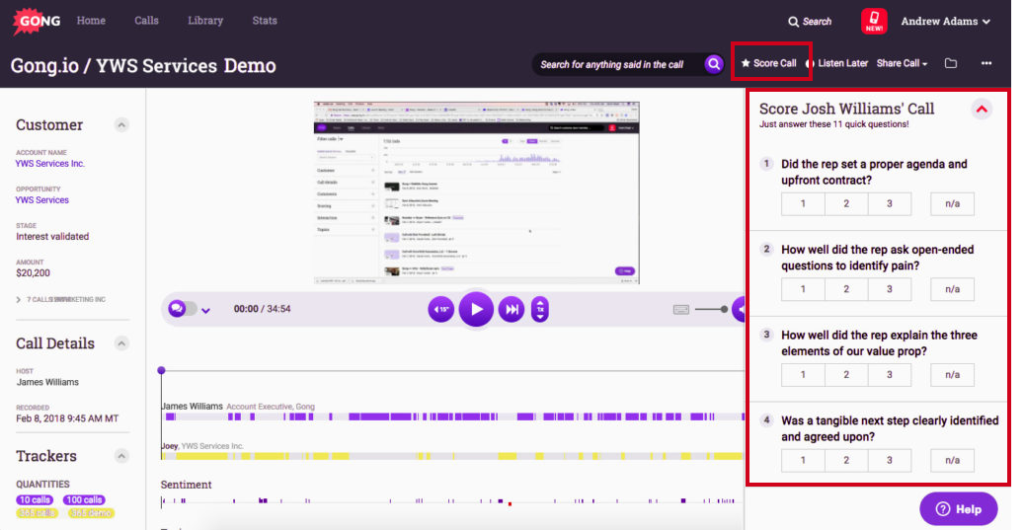
Now that you’re here
If you liked this blog post, you’ll love Gong.io.
Here’s why:
If you’re a sales leader, you’re probably in the dark about what’s being said during customer-facing conversations.
- Are your sales professionals delivering the right message?
- What separates your best reps from the rest?
- Has your team adopted your new sales methodology?
You’re probably flying blind with these questions.
Gong’s sales management software gives you total visibility into customer-facing conversations, helping you ensure the success and adoption of your sales methodology.

You’ll easily track what’s working and where your team needs coaching around your methodology.
See it in action today by clicking the banner below:




